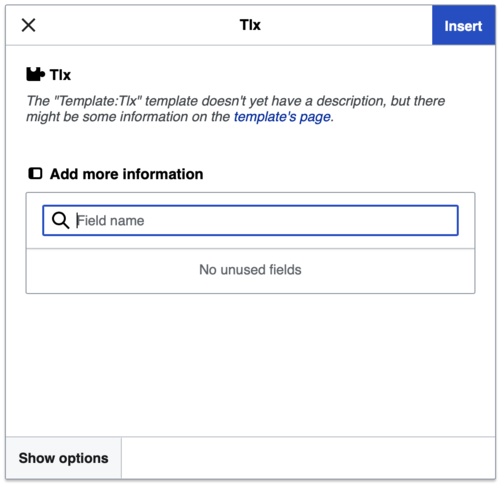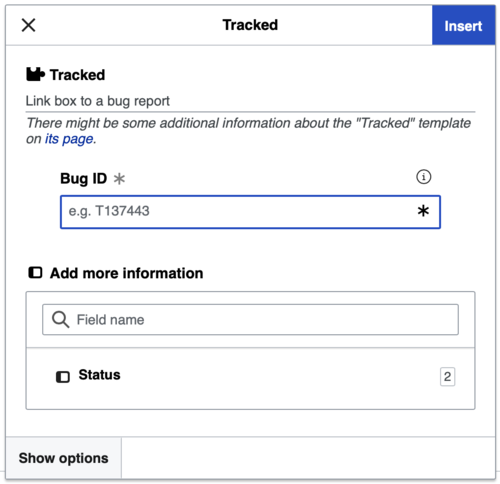Tɛmplet:Italic title
| This template is used on many pages and changes may be widely noticed. Test changes in the template's /sandbox or /testcases subpages, or in your own user subpage. Consider discussing changes on the talk page before implementing them. |
| This template uses Lua: |
Template:Italic title italicizes page titles. Article titles cannot contain wiki formatting, such as '', so article titles cannot be italicized in the normal way. This template has the following effects:
- Titles with no parentheses
()are fully italicised:Foo→ FooTalk:Foo→ Talk:Foo
- Titles which contain parentheses are italicised before the first opening parenthesis:
Foo (bar)→ Foo (bar)Talk:Foo (bar)→ Talk:Foo (bar)
- Italicization can be forced on parenthesized text with the
|all=yesparameter.
This template should only be used in articles that meet the criteria for italic titles given in the Article titles policy.
Meta templates which use this template should place {{Auto italic title}} in their documentation.
Location on page[mali mi di yibu sheena n-niŋ]
If the page has a {{Short description}} template, this template should go immediately underneath it, normally as the second item on the page. If there is no {{Short description}} template, add this template at the very top of the page, above everything else. There ought to be no blank line after {{Italic title}} because that will cause an extra blank line in the page's rendered appearance.
Usage[mali mi di yibu sheena n-niŋ]
Basic usage[mali mi di yibu sheena n-niŋ]
{{Italic title}}
All parameters[mali mi di yibu sheena n-niŋ]
{{Italic title|noerror|string=text in title|all=yes}}
Parameters[mali mi di yibu sheena n-niŋ]
|1=: if this is set to|1=noerror, error messages are suppressed. See #Errors for more details.|all=: if this is set to|all=yes, text in parentheses is italicized.|string=: instead of italicizing the whole title, italicize only some specific text. For example, using|string=Ally McBealon the page "List of Ally McBeal episodes" would result in "List of Ally McBeal episodes".
{{DISPLAYTITLE:Desired Title}} can be used instead in cases not covered by the parameters, e.g. two substrings with italics, or italics combined with lowercase first character.
Errors[mali mi di yibu sheena n-niŋ]
Sometimes you may see red error messages like this at the top of the page:
Warning: Display title "<i>Article title (disambiguation)</i>" overrides earlier display title "<i>Article title</i> (disambiguation)".
This usually means that there is another instance of {{Italic title}} on the page, usually added by one of the infoboxes. Certain infoboxes, for example {{Infobox album}}, add {{Italic title}} by default. Check the template documentation for any infobox used on the page; it may have instructions about how to deal with italic titles. You may be able to adjust the italics from the infobox instead of using {{Italic title}} at the top of the article. Or if that doesn't work, you may be able to disable the infobox's italics code altogether.
If you are still having problems, try putting {{Italic title}} after the infobox. You can suppress the error message by using the code {{Italic title|noerror}}.
Technical details: this template uses the DISPLAYTITLE magic word to italicize the title. Error messages can be produced by any two templates which use this magic word, and are not limited to this template. If you are unsure why you are getting a particular error message, you can ask about it at Wikipedia:Village pump (technical).
Tracking categories[mali mi di yibu sheena n-niŋ]
If the |string= parameter is used but that string is not found in the title, the page is added to Category:Pages using italic title with no matching string.
TemplateData[mali mi di yibu sheena n-niŋ]
| This tɛmplet needs to be updated. Please help update this tɛmplet to reflect recent events or newly available information. |

- Main page
- Feedback at MediaWiki or local feedback
- Sandbox (no account required)
- Why are the developers building this?
- Documentation:
- Development:
- Customization
- Known problems
- Requests for Comments (RfCs): Jul 2013 a, Jul 2013 b, Jul 2015, Sep 2015
What is template data?[mali mi di yibu sheena n-niŋ]
Template data is the standardized description of a template, used by the default VisualEditor, the optional 2017 wikitext editor and other tools to improve the template-editing experience for the user. Both VisualEditor and the 2017 wikitext editor include a wizard to edit templates, but for the wizard to be most useful, it needs to present specific information to the user about each template, such as a short description of the template's purpose and its parameters. This information is codified formally (by any wiki editor) using template data.
Editing without template data[mali mi di yibu sheena n-niŋ]
Without template data, each parameter needs to be added manually when inserting a new template.
No information is provided about what the value of the parameter should be.
Editing with template data[mali mi di yibu sheena n-niŋ]
With template data, a list of supported parameters (and their description) is provided for the template.
Template data provides context for each parameter, and makes it much easier for users to modify templates.
Adding template data[mali mi di yibu sheena n-niŋ]
Anyone can help by adding template data to templates (particularly high-profile ones, such as infoboxes) so that they are easier to edit in VisualEditor. The following is a minimal example, placed on a template's documentation page:
<templatedata>{
"description": "insert description here",
"params": {
"first parameter": {
"label": "x",
"description": "x",
"type": "string",
"suggested": true,
"autovalue": "derived automatic value",
"default": "default value",
"required": false
}
}
}</templatedata>
You can also add or edit template data using a GUI, by pressing the following button which appears at the top of the edit page:
The template data tutorial explains in detail how to add template data information to a template.
Adding suggested values for parameters[mali mi di yibu sheena n-niŋ]
The parameter property suggestedvalues lets you define a list of parameter values to be shown to VisualEditor users in a dropdown for easy selection. This can be done either directly in JSON or using the TemplateData editor with no coding required. Both methods are explained in detail below.
Once the values have been added to template data, the VisualEditor will display them in a combo box (a dropdown into which users can also enter a custom value). The user selects the desired value by clicking on it. If the list of values is long - for example, a list of a country’s states - the user can begin typing in the field, whereupon the list will be filtered to show only values containing the typed text. To change an entered value, the user must simply clear the field, and the full dropdown list will appear again. If the user needs a value not included in the list (for example, "message in a bottle") they can type it in manually.
For suggested values to be displayed in the VisualEditor, the parameter’s type must be set to one of the following options:
- content
- line
- string
- number
- unknown
- unbalanced wikitext.
Other types (file, page, template, user, date, boolean, URL) are not currently supported because they have special functionalities in the VisualEditor already (such as autocomplete) which would interfere with the dropdown menu for suggested values in the VisualEditor.
Adding suggested values for parameters in wikitext[mali mi di yibu sheena n-niŋ]
To add suggested values to any parameter type, add the new property “suggestedvalues” to the parameter in JSON. The “suggestedvalues” attribute must be a list of strings.
An example might look like this:
"media_type": {
"label": "Type of media",
"example": "Newspaper",
"type": "string",
"description": "In what medium was the article published?",
"suggestedvalues": [
"Journal",
"Book",
"Newspaper",
"Magazine"
]
}
Adding suggested values for parameters with the template data editor[mali mi di yibu sheena n-niŋ]
For the parameter types listed above, you can add suggested values using the template data editor.
Step 1. Click on "Manage TemplateData".
Step 2. Click on the name of the parameter you want to add suggested values to.
Step 3. If it’s not already, set the type of the parameter to one of the following: content, line, string, number, unknown or unbalanced wikitext. A new input field "Suggested values" will appear. If the parameter is already set to one of these types, the input field should already be visible.
Step 4. Type in the suggested value(s), including any spaces and special characters, and press enter to add it to the list.
Here you can see an example of how to add suggested values in the TemplateData editor.
Used templates[mali mi di yibu sheena n-niŋ]
See also[mali mi di yibu sheena n-niŋ]
- Wikipedia:VisualEditor/TemplateData/List A list of all pages with template data
A template to italicize article titles
| Parameter | Description | Type | Status | |
|---|---|---|---|---|
| Error options | 1 | If set to "noerror", suppresses error messages. Using this is a last-ditch fix - see the template documentation for other options. | String | optional |
| All | all | If set to "yes", italicization is forced on parenthesized text. | String | optional |
| String | string | Specify a string in the title to italicize, rather than italicizing the entire title. | String | optional |




